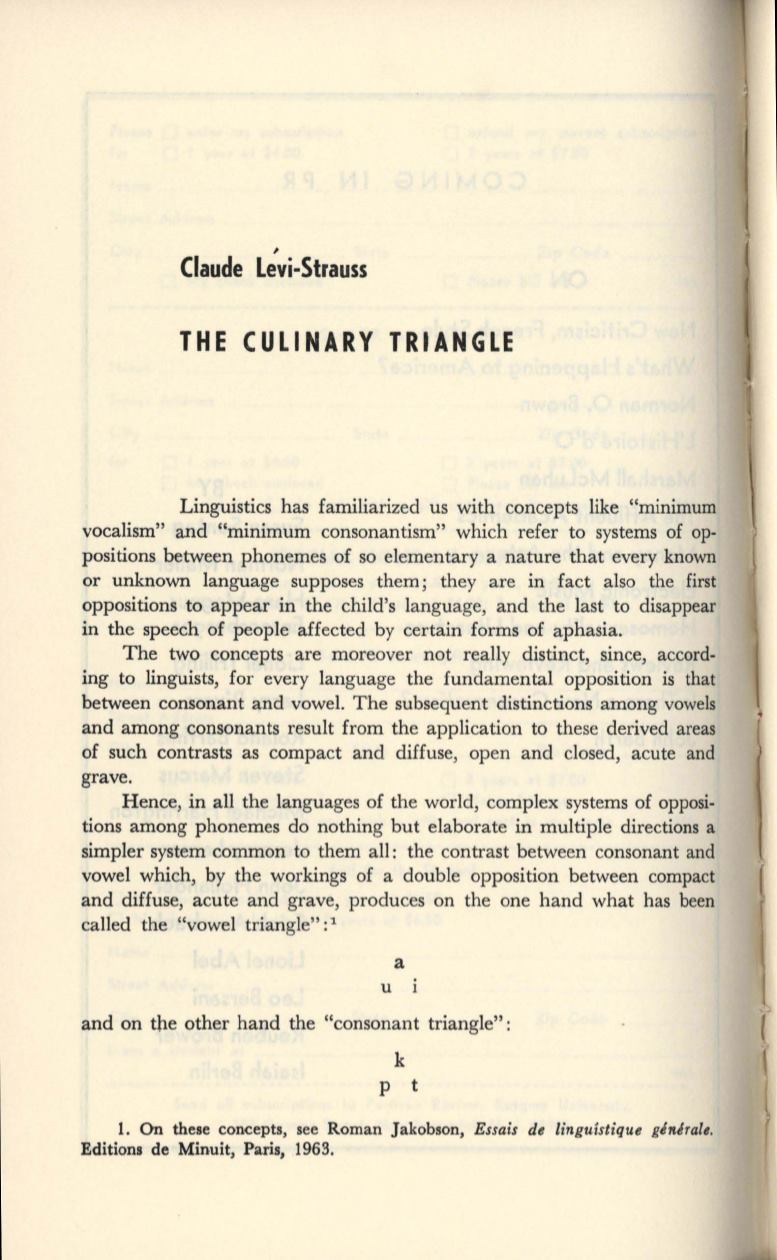
,
Claude Levi-Strauss
THE CULINARY TRIANGLE
Linguistics has familiarized us with concepts like "minimum
vocalism" and "minimum consonantism" which refer to systems of op–
positions between phonemes of so elementary a nature that every known
or unknown language supposes them; they are in fact also the first
oppositions to appear in the child's language, and the last to disappear
in the speech of people affected by certain forms of aphasia.
The two concepts are moreover not really distinct, since, accord–
ing to linguists, for every language the fundamental opposition is that
between consonant and vowel. The subsequent distinctions among vowels
and among consonants result from the application to these derived areas
of such contrasts as compact and diffuse, open and closed, acute and
grave.
Hence, in all the languages of the world, complex systems of opposi–
tions among phonemes do nothing but elaborate
in
multiple directions a
simpler system common to them all: the contrast between consonant and
vowel which, by the workings of a double opposition between compact
and diffuse, acute and grave, produces on the one hand what has been
called the "vowel triangle":
1
a
u
and on the other hand the "consonant triangle":
k
p
t
1.
On these concepts, see Roman Jakobson,
Essais de linguistique gbtlrale.
Editions de Minuit, Paris, 1963.


